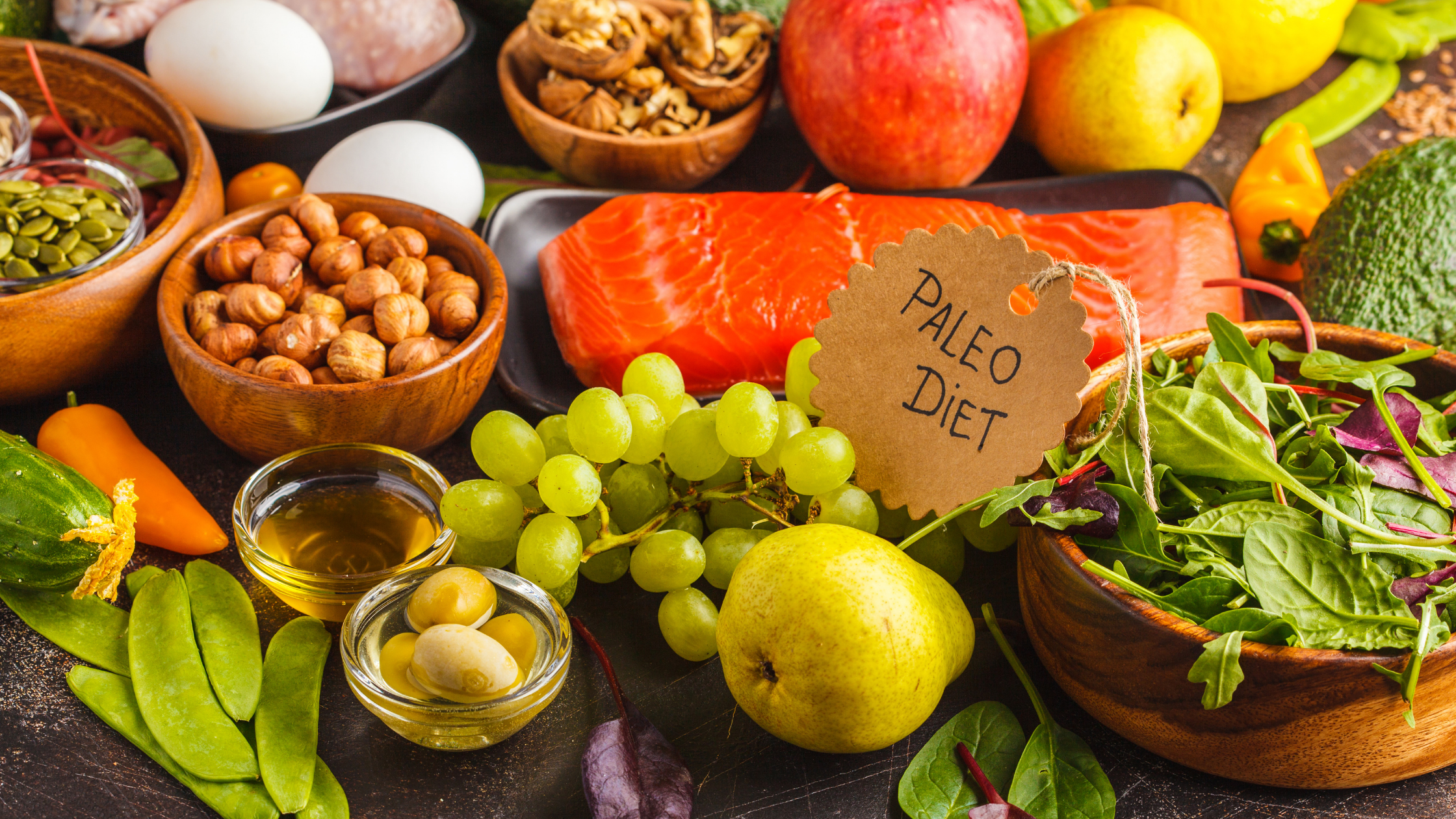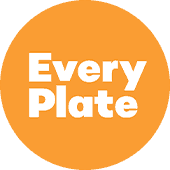Have you ever thought about what our earliest human ancestors ate?
This is the main question behind the concept of the Paleolithic diet, known simply as paleo.
With the paleo diet, you eat foods that are similar to what was eaten during the Paleolithic era, which was about 2.5 million to 10,000 years ago. In other words, you’re eating the diet of a typical hunter-gatherer.
On a paleo diet, you’ll eat a lot of whole foods. This can include meat, fish, eggs, vegetables, fruits, nuts, seeds, healthy fats, and spices. A paleo diet excludes highly processed foods, sugar, dairy, legumes, grains, additives, and trans fats.
But what exactly are the benefits of the paleo diet? And what are the risks? Here’s everything you need to know before you start eating paleo.
What is the paleo diet?
Why return to the Paleolithic way of eating? The modern diet we now have is the result of farming practices, which enable us to cultivate and eat more grains, legumes, and sugar. Relative to the age of humans, these foods are actually quite modern.
According to the idea behind the paleo diet, we never evolved to digest these foods – and as such, our bodies aren’t capable of digesting and using these foods adequately. This is called the discordance hypothesis. As a result, eating these foods can result in illness, according to paleo advocates.
Is paleo legitimate?
The idea behind paleo is interesting – but is it scientifically sound?
Some experts have debunked the “discordance hypothesis” (the idea that our bodies are not evolved to eat farmed foods). Archeological research has shown that some Paleolithic humans did indeed eat certain grains as much as 30,000 years ago. These were grains that were wild, not farmed, and thus accessible to hunter-gatherers.
Additionally, some have pointed out that Paleolithic humans didn’t eat one single diet. Their diets depended on their geography, the local climate, and other factors. As such, this diet wasn’t universal among all our Paleolithic ancestors.
Paleo – like every other diet – remains controversial among experts.
What can and can’t you eat on the paleo diet?
There are a few different variations of the paleo diet. Some follow paleo guidelines strictly while others use them as a loose guideline.
Generally, on paleo, you should avoid:
- Grains, including wheat, barley, spelt, rye, and more
- Legumes, such as beans and lentils
- Dairy, although some versions of paleo allow certain dairy products
- Sugar, high-fructose corn syrup, and artificial sweeteners
- Certain vegetable oils, like sunflower oil
- Trans fats, which are also called “hydrogenated” or “partially hydrogenated” oils
- Highly processed foods
This means you’ll mostly eat whole foods, including:
- Meats like pork, poultry, beef, lamb, and more
- Fish and seafood
- Eggs
- Vegetables and fruits
- Nuts and seeds
- Healthy fats and oils
- Herbs, salt, and spices
Most paleo advocates suggest using organic, grass-fed, and free-range products if possible; this is closer to what our ancestors ate in the Paleolithic era.
Some people expand the paleo diet to include:
- Red wine
- Dark chocolate
- Honey and other natural sweeteners
- Grass-fed butter and some cheeses
- Small amounts of gluten-free grains
Paleo also includes tea and coffee.
Many people use paleo as an elimination diet – they eat a paleo diet for one or two months and then gradually introduce other foods back into their diets, one by one. They monitor whether they seem to have any negative reactions to the food, such as headaches, lethargy, or digestive issues.
What are the benefits of eating paleo?
What does the research say about the benefits of eating paleo?
Many people try paleo in order to lose weight. Recently, a large review of studies concluded that a paleo diet may help with weight loss, including reducing waist circumference. However, others have raised concerns that paleo might be hard to sustain in the long run, which means that you might regain the weight you lost.
Another potential benefit of eating paleo is that it might reduce blood pressure. However, this does need to be studied further.
Lastly, a paleo diet might reduce “bad cholesterol.” Two studies, in fact, have shown a statistically significant change in cholesterol markers. Unfortunately, there is a lack of studies that conclusively show that paleo helps with cholesterol.
Some people claim that eating a paleo diet has improved their digestion, reduced their insulin resistance, and lifted their mood. This must be studied in detail before we know for sure.
What are the risks of eating paleo?
There are generally few risks of eating a paleo diet as long as you’re doing it in a healthy way.
However, as a feature article on UC Davis Health points out, the paleo diet generally lacks calcium and vitamin D. It’s also very high in saturated fat and protein, and if you consume too much of those things, it can increase the risk of kidney issues and heart disease.
Also, you might be at risk for consuming too little fiber unless you’re conscious of the amount of fiber-rich vegetables and fruit in your diet.
It’s always important to speak to your doctor before trying a new diet. This is especially a good idea if you have any existing kidney or heart issues.
If you have a history of eating disorders, speak to your doctor and therapist before trying any new eating plan. Be sure to disclose this history.
What does a typical paleo eating plan look like?
So, what does paleo food look like? Of course, this differs from person to person and it depends on how strictly paleo you are.
Here’s an idea of what your weekday eating might look like if you’re following the paleo diet.
Monday
Breakfast: Bacon, eggs, and sauteed spinach and tomato
Lunch: Tuna salad (with lettuce, green pepper, and olive oil)
Dinner: Stir-fried beef and vegetables
Tuesday
Breakfast: Omelette with vegetables
Lunch: Salmon and sauteed greens
Dinner: Chicken and vegetable soup
Wednesday
Breakfast: Sweet potato topped with a poached egg and vegetables
Lunch: Chicken salad with pecan nuts
Dinner: No-bun burgers with a fresh green salad
Thursday
Breakfast: Berries and apple with simple-ingredient nut butter
Lunch: Avocado and chicken “wrap” in a lettuce leaf
Dinner: Pork with a salad
Friday
Breakfast: Banana and chia seed pudding
Lunch: Bacon and strawberry salad
Dinner: Roast chicken and vegetables
Paleo snacks
In between meals, you can snack on leftovers or paleo-friendly snacks. This can include:
- Plantain chips
- A handful of berries and mixed nuts
- Seed crackers with cold meats and avocado dip
- Veggie sticks with avocado dip
- Small amounts of dark chocolate
- Boiled eggs
- Fruits with simple-ingredient nut butter
- Chia seed pudding
- Smoothies
- Soups
- Salads
How to get started with paleo
Interested in trying paleo for yourself? Here are a few tips.
Talk to your doctor
We’ve mentioned this before, but it’s worth repeating: before you try any new diet – especially if it’s a drastic change – it’s wise to talk to your doctor. They’ll help you figure out if the diet is suitable for you, and they might be able to advise you on how to do it safely.
Join a community
Trying a new diet alone can be a little demotivating and boring – for some of us, at least.
It might be a good idea to join others who are following a paleo diet. If your family, coworkers, or friends could join you, that would be great! But you can also turn to the internet to find company and motivation. Online forums, Facebook groups, and blogs are a great place to start.
Knew Health Members get access to certified health coaches as a part of their Membership. They are a great resource for dietary education, as well as goal setting and accountability when working change or improve your diet.
Look up some paleo-friendly recipes
As demonstrated by the above list, many paleo meals are quite straightforward: you’re combining meat/fish with vegetables and some nuts or seeds. However, this can get boring after a while, so it’s wise to look for exciting paleo recipes.
There are dozens of paleo blogs, forums, and cookbooks out there. Take note of what sounds appealing to you. It might be handy to write out a list of recipes and snacks as well as all the ingredients you’ll have to purchase.
Clear out your cupboards
If the paleo-unfriendly food in your cupboards – like popcorn, candy, or pasta – is too tempting for you, consider clearing it out. Donate it to a food bank or soup kitchen.
Shop for paleo-friendly food
Fill that empty space in your cupboard with paleo-friendly foods. Don’t forget to purchase snacks, too! Remember to check and double-check the ingredients lists to ensure you’re not accidentally buying anything you shouldn’t.
Purchase the necessary supplements
Because paleo can be low in calcium, vitamin D, and dietary fiber, you might want to stock up on those supplements. Knew Health Members get a generous discount on supplements, which is one of the many services we offer our Members.
The Paleolithic diet has a strong focus on whole foods. Although it should be researched more thoroughly, the available studies suggest it could be beneficial for weight loss and other health benefits. If you’d like to try paleo for yourself, it’s best to speak with your doctor beforehand.
RESOURCES
de Menezes, E. V. A, et al. (2019). Influence of Paleolithic diet on anthropometric markers in chronic diseases: systematic review and meta-analysis. https://www.ncbi.nlm.nih.gov/pmc/articles/PMC6647066/
Jönsson, T. et al. (2009). Beneficial effects of a Paleolithic diet on cardiovascular risk factors in type 2 diabetes: a randomized cross-over pilot study. https://pubmed.ncbi.nlm.nih.gov/19604407/
Nella, A. (2015). Is the paleo diet safe for your health? https://health.ucdavis.edu/welcome/features/2014-2015/06/20150603_paleo-diet.html
Osterdahl, M. et al. (2008). Effects of a short-term intervention with a paleolithic diet in healthy volunteers. https://pubmed.ncbi.nlm.nih.gov/17522610/
Wang, C. et al. (2016). Macro-Process of Past Plant Subsistence from the Upper Paleolithic to Middle Neolithic in China: A Quantitative Analysis of Multi-Archaeobotanical Data. https://journals.plos.org/plosone/article?id=10.1371/journal.pone.0148136
Disclaimer: This information is being provided to you for educational and informational purposes only. It is being provided to educate you about how to take care of your body and as a self-help tool for your own use so that you can reach your own health goals. It is not intended to treat or cure any specific illness and is not to replace the guidance provided by your own medical practitioner. This information is to be used at your own risk based on your own judgment. If you suspect you have a medical problem, we urge you to take appropriate action by seeking medical attention.










































